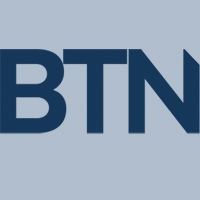Southwest Airlines reported a slight uptick in corporate travel in March, although the carrier does not expect corporate travel demand to surpass half of pre-pandemic levels any time this year.
Revenue from managed corporate travel was down 88 percent compared with levels from the same period in 2019, which is similar to the decline the carrier saw in the fourth quarter of 2020, Southwest president Tom Nealon said during an earnings call on Thursday. By March, that had improved by a few percentage points, but Southwest is preparing for it still to be down 50 percent to 60 percent by the end of the year, he said.
Although Southwest’s corporate clients have begun to unfreeze and relax travel policies, that hasn’t translated into significant corporate demand. Certain segments, including government, manufacturing and transportation, have begun to recover, but large consulting firms—”the biggest consumers we have”—have not, he said.
“Based on what we are seeing and hearing from our corporate customers, it continues to be very clear that domestic business travel will certainly continue to significantly lag leisure recovery,” Nealon said.
In the longer term, Southwest could see corporate revenues down 10 percent to 20 percent permanently or “for some extended period of time,” Nealon said. However, Southwest also will work to gain corporate business travel share, particularly with its newly expanded participation with global distribution systems.
Work to get on the Sabre GDS is “very far down the path,” and the carrier is targeting to go live before Labor Day, which is on the early side of its previous forecast window, according to Nealon.
Overall first-quarter passenger revenue wasdown 55.5 percent year over year to $1.7 billion, though performance for the quarter was “a lot better than what we thought [it] would be back in January,” Southwest chairman and CEO Gary Kelly said. With growing leisure demand, Southwest is “prepared to flex up capacity,” with June capacity to be nearly equal to that of June 2019, albeit on a different route network. For example, Southwest has shifted capacity away from business-travel-heavy short routes for longer leisure routes.
Southwest reported a net income of $116 million for the first quarter, though that took into account the $1.2 billion offset from the extension of the Payroll Support Program. Excluding that and other special items, the carrier had a $1 billion loss for the quarter.
Average daily cash burn during the quarter was about $13 million, and it has a “realistic” projection that it will have break-even cash flow in the second quarter, Kelly said.
Sustainable Fuel Agreements
Southwest on Thursday also announced that it has reached an understanding with two energy companies, Marathon Petroleum Corp. and Phillips 66, to spur development and production of sustainable aviation fuel.
The agreements include increased collaboration for advocacy on governmental policies regarding sustainable fuel and cooperation in research and development, according to Southwest. The work will “help scale-up the SAF industry, bringing SAF to market at competitive prices and helping Southwest meet its carbon-reduction goals,” according to Southwest VP of supply chain management and environmental sustainability Stacy Malphurs.
The two companies together estimate that they could produce at least 300 million gallons of sustainable fuel by 2025, and Southwest is exploring agreements to buy a “substantial share” of that fuel, which would cover a “significant portion” of its jet fuel demand for its operations in California.
